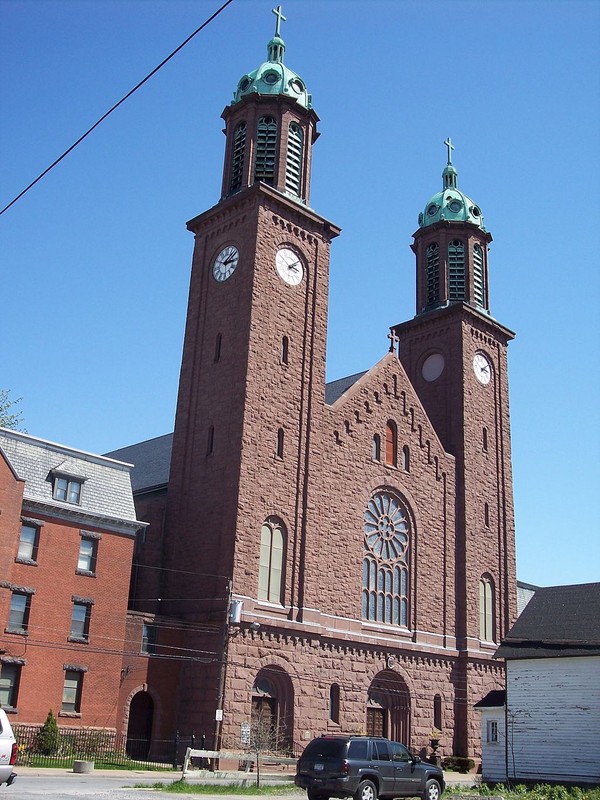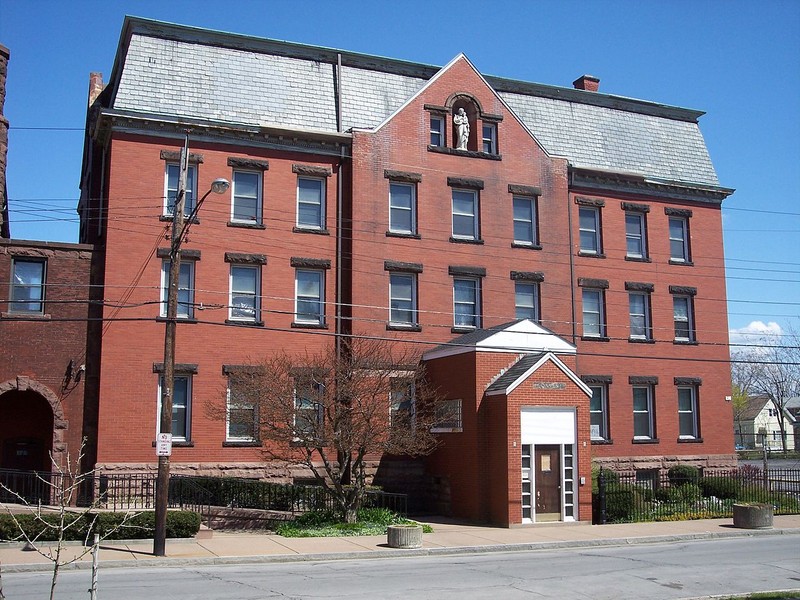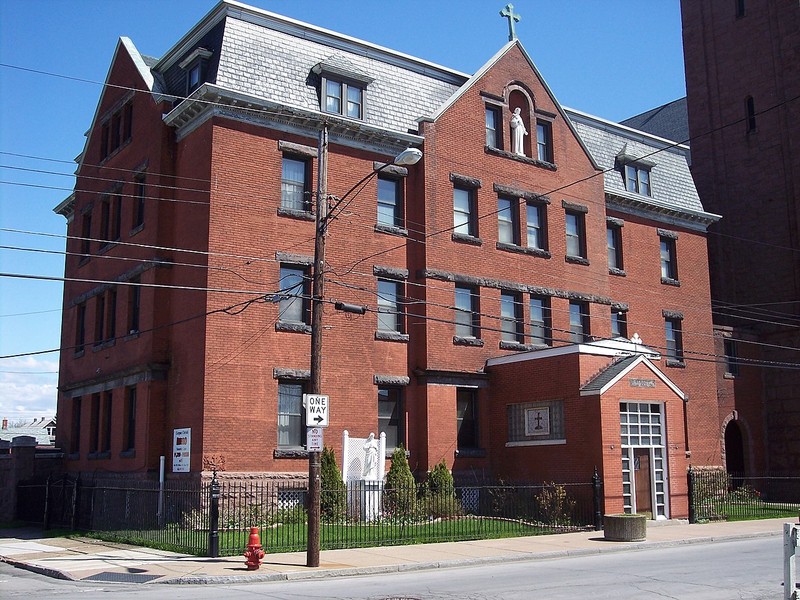Corpus Christi Church
Introduction
Text-to-speech Audio
Towering over the surrounding neighborhood, Corpus Christi Church was built in 1907 to serve the growing Polish Catholic community in Buffalo. Over time, the parish complex grew to include the rectory, convent, and other buildings. The church, which was built of limestone with a reddish-brown sandstone exterior, is a fine example of Romanesque Revival architecture. The pair of clock towers reach a height of 175 feet and are topped by belfries and cupolas. Other notable features include a large stained glass window and arched windows and entryways. Corpus Christi was added to the National Register of Historic Places in 2007.
Images
Built in 1907, Corpus Christi Church is a fine example of Romanesque Revival architecture. It was one of several churches in the city that served a large Polish Catholic community that numbered around 80,000 people in the early 1900s.

The former convent was built in 1905.

The rectory was built in 1907 after seven years of construction.

Backstory and Context
Text-to-speech Audio
Compared to Chicago and Detroit, the Polish community in Buffalo in 1870 was relatively small with around 160 Poles living in the city. In the coming years, however, more Poles settled in Buffalo. The first Polish Catholic church in Buffalo, St. Stanislaus, was built in the mid-1870s and became known as the "Mother Church of Polonia." After it was completed, around 400 homes were built in the surrounding neighborhood. Between 1886 to 1893, three more churches were built. Each became centers of Polish traditions, language and culture.
Even with these additional churches, another church was needed to accommodate the community. As a result, Bishop James E. Quigley asked the Franciscans to establish a new congregation. Franciscan Friar Hyacinth Fudzinski arrived in Buffalo from Syracuse and founded Corpus Christ in 1898. Franciscan Sisters of St. Joseph joined the new parish to teach in the school. Congregants first met in a former tavern but moved to a large, three-story brick building in 1889. The church was located on the first floor and could seat 1,000 people. The school was on the second floor and the social and religious meeting place was on the third floor. By 1900, however, the building had become too small.
Local architects Carl Schmill and George C. Gould designed the plans for the present church building in 1901 but construction didn't begin until 1907. The church is known for its use of 11,000 light bulbs and ecclesiastical art, particularly the replica of Raphael Santi's painting of "Disputa" located in the half dome of the apse. It appears it was the work of a local Polish-American artist, Joseph Mazur, who created the other murals in the church. The stained glass was created by the New York City studio of renowned Munich-based firm Franz Mayer and Co. The rectory started to be built in 1900 and was finished in 1907. The convent was built in 1905. Two recreational centers, the Kolbe Center, which was built in 1928 as a "girls club", and the "Corpus Christi Club", were both built in 1928. A school was also built but it was torn down in 1988.
In 2003, the Franciscans announced that they were leaving the parish and it seemed that the church would close. However, the parish asked the Pauline Brothers and Sisters to run the parish. They agreed and arrived in 2004.
Sources
"History." Corpus Christi Church. Accessed July 5, 2022. https://s3.amazonaws.com/NARAprodstorage/lz/electronic-records/rg-079/NPS_NY/07000630.pdf.
Ross, Claire L. "Corpus Christi R.C. Church Complex." National Park Service - National Register of Historic Places Nomination Form. June 27, 2007. https://s3.amazonaws.com/NARAprodstorage/lz/electronic-records/rg-079/NPS_NY/07000630.pdf.
All images via Wikimedia Commons: https://commons.wikimedia.org/wiki/Category:Corpus_Christi_Church_(Buffalo,_New_York)
